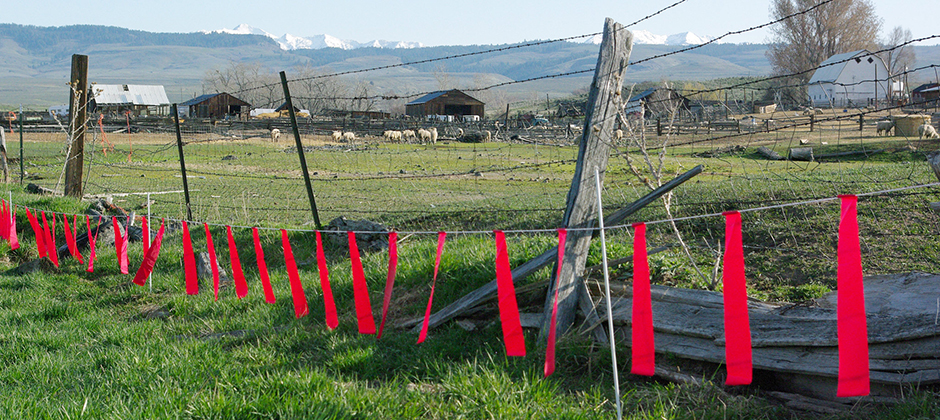WS to launch nonlethal predation management projects
The use of fladry is one nonlethal technique used to discourage wolves and coyotes from preying on livestock. ©Oregon Department of Fish and Wildlife
USDA-Wildlife Services has identified 12 states where it will implement nonlethal strategies to reduce or prevent depredation on livestock by wildlife. The fiscal year 2020 budget allocated $1.38 million for nonlethal predator damage management and research to the program, which is part of the Animal and Plant Health Inspection Service agency.
Use of the allocated funds will be tailored to address varied needs in Arizona, California, Colorado, Idaho, Michigan, Minnesota, Montana, New Mexico, Oregon, Washington, Wisconsin and Wyoming under the supervision of the WS director in each state. The state directors will also collaborate with State and local agencies, non-governmental organizations, and academia to expand the work through cost-share and cooperative funding.
The majority of the funding supports WS’ operational efforts. Those efforts include hiring full-time or seasonal employees to conduct nonlethal methods; presenting workshops, educational sessions and outreach; and purchasing nonlethal tools and scare devices for immediate use or to establish loan programs for producers.
The WS National Wildlife Research Center will conduct a broad-scale research evaluation focusing on the effectiveness of nonlethal management strategies to prevent livestock depredation. In particular, it will assess rancher satisfaction with the nonlethal techniques, any barriers to use of the techniques and changes in producers’ attitudes towards nonlethal predator management as a result of their use of nonlethal techniques and assistance by WS personnel. It also will assess the cost-effectiveness of the techniques used.
WS provides federal leadership and expertise to resolve human-wildlife conflicts using multiple strategies. As a service program, it responds to requests from persons and agencies needing help with wildlife damage and contributing to the cost of the assistance. About 25 to 30% of its overall budget protects agricultural resources. WS uses the science-based Integrated Wildlife Damage Management (IWDM) approach, which employs and recommends a combination of multiple tools and techniques.
Increasingly, livestock producers are employing nonlethal methods. Ninety-three percent of goat operations and 58% of sheep ranchers employ nonlethal techniques. The use of such methods by cattle producers has increased sixfold since 2000, with 19% of cattle operations using nonlethal methods.
Livestock producers report annual losses to predators of more than 590,000 head of cattle, calves, sheep, lambs, goats and kids valued at $168 million. Additional livestock injured by predators, but not killed, are valued at $59.4 million.
The congressional allocation will be used to continue increased use and understanding of nonlethal methods to prevent or reduce the killing of livestock by predators. The most common predators are coyotes (Canis latrans) and dogs. Others include wolves (Canis lupus), black bears (Ursus americanus), grizzly bears (Ursus arctos horribilis) and mountain lions (Puma concolor).
Wildlife Services is a Strategic Partner of TWS.



